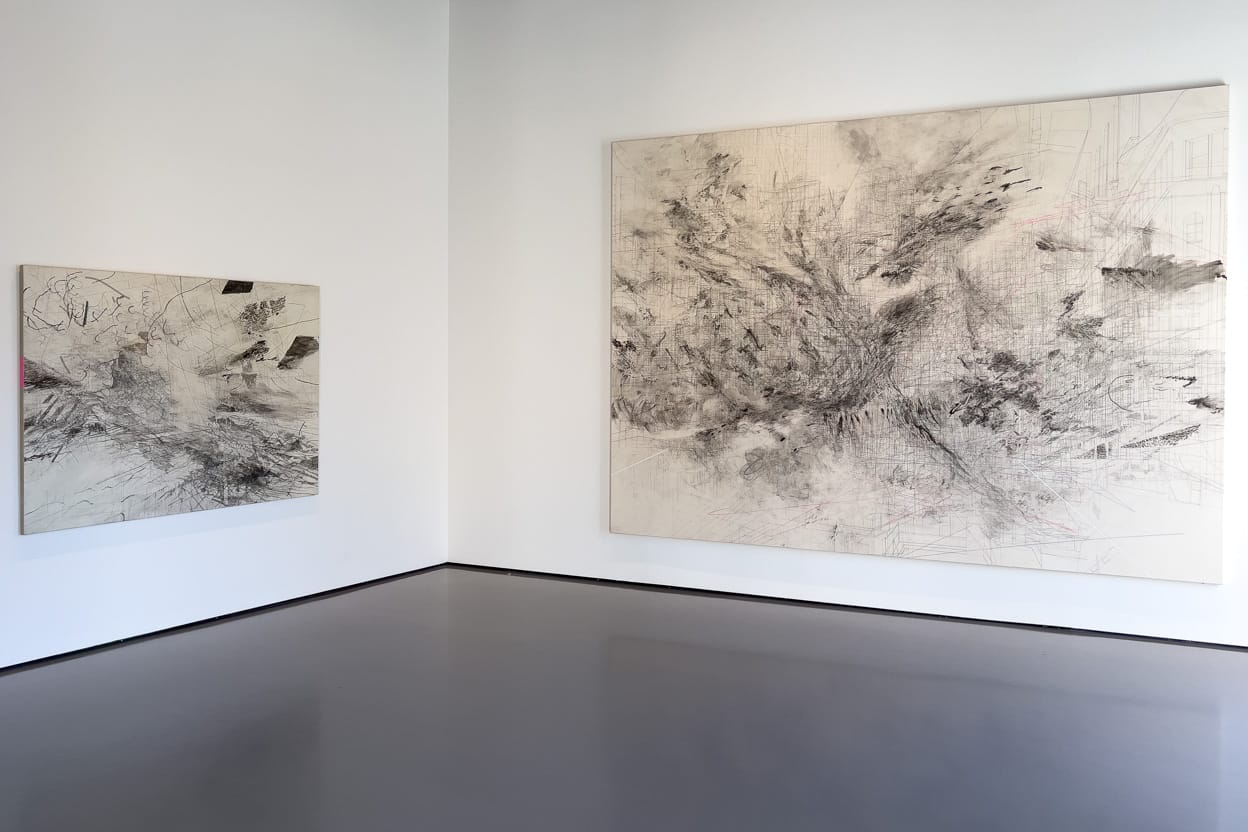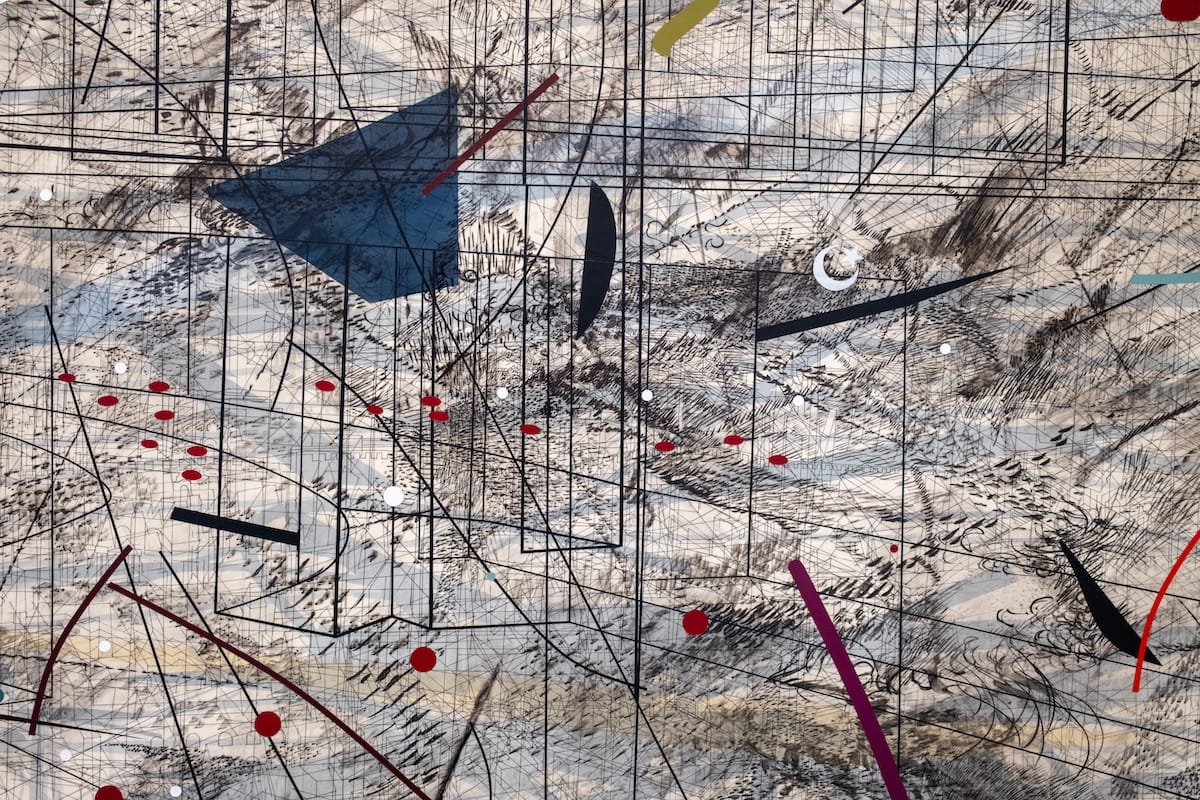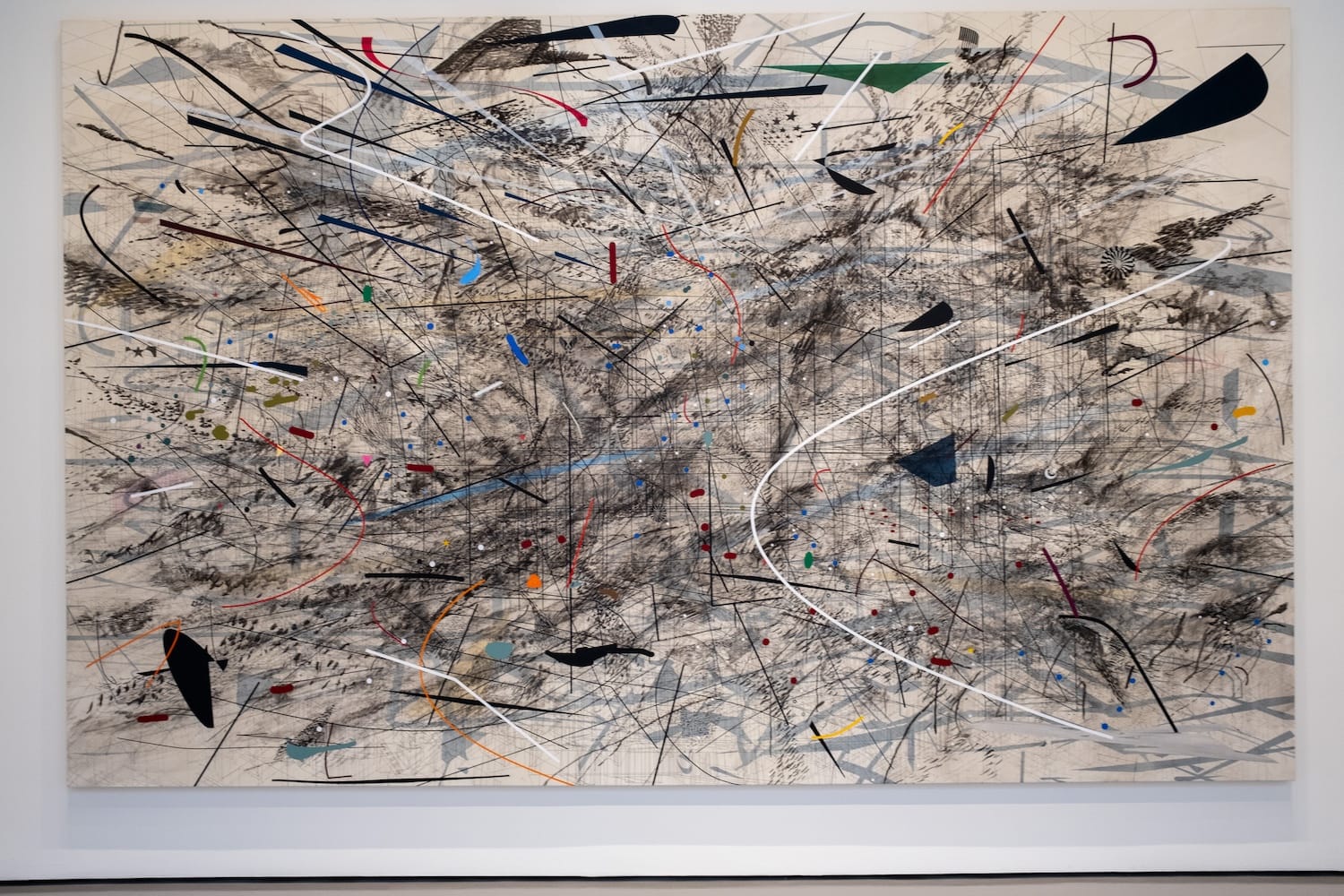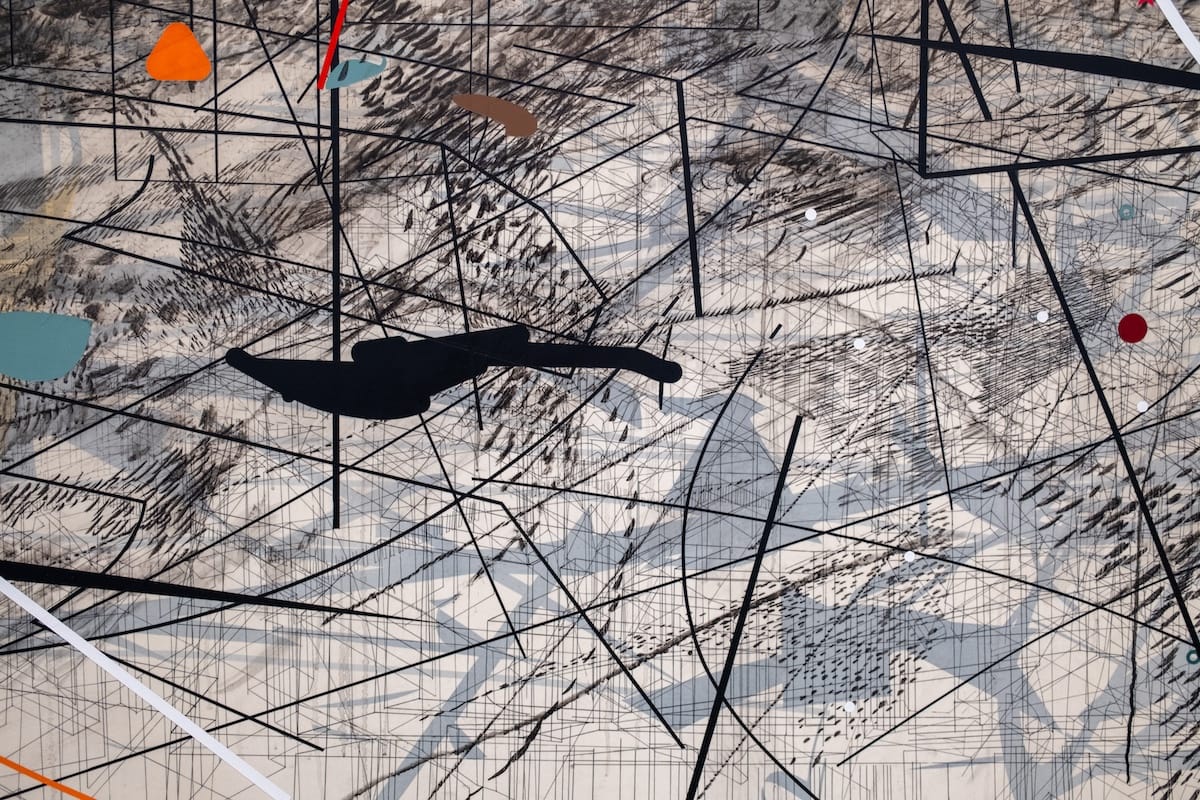
In 2020 The Whitney Museum of American Art and the Los Angeles County Museum of Art co-organized a large survey of the work of Julie Mehretu. I’m a huge fan of her early work, but because of the COVID-19 pandemic I was unable to fly to the US. Luckily for me, the Librairie Marian Goodman in Paris was so kind as to get me the catalogue of the exhibition. I rejoiced when, earlier this year, I read that the Palazzo Grassi would organize a large Julie Mehretu exhibition as one of the collateral events of the Venice Biennale 2024.
Of course, visiting an exhibition of three of my favourite artists, - Pierre Huyghe, Berlinde de Bruyckere and Julie Mehretu -, on the same day made for a perfect day. In case you're wondering, I topped it off with a delicious poke bowl.
The exhibition has been conceived as a non-chronological journey through Mehretu’s work and has been divided into seven chapters. The first three correspond to different stages in Mehretu’s work. The exhibition has been enhanced by works by some of Mehretu’s artist friends, including Nairy Baghramian, David Hammons and Huma Bhabha, which enter into a dialogue with Mehretu’s own work. It makes for an interesting exhibition, because the work of these artists beautifully complements the work of Mehretu.



Julie Mehretu, Black City, 2007
I greatly enjoyed finally being able to see the amazing “Black City” (2007) and “Invisible Line (collective)” (2010-11) in real life. These early works are absolutely magnificent. The background consists of highly intricate architectural renderings of buildings and imaginary cityscapes, which have been overlayed by geometric shapes and oblique lines. Because of their incredible information density they are the perfect metaphor for the complexity of our world and the dynamics of global capitalism and information networks. But most of all they are a visual treat. There were only a handful of other visitors when I visited so I was able to sit down in front of both paintings to contemplate them for several minutes.
Around 2012 Mehretu changed course. The architectural drawings that formed the underlying framework of her earlier paintings gradually disappeared to be replaced by heavily blurred, digitally manipulated press photographs of world events, such as the Grenfell Tower fire in London, the civil war in Syria, the Hong Kong protests, the COVID-19 pandemic and the war in Ukraine. The titles of these paintings refer back to the underlying image, as in “Conjured Parts (Syria), Aleppo and Damascus” (2016), except that nothing in the painting itself reminds of these events. Some of these works are quite wonderful, such as “Maahes (Mihos) torch” (2018-19), which is based on a photograph of a fire at the National Museum in Rio de Janeiro, Brazil, or so I read in the leaflet, but for the most part these are a generic abstract paintings.
I know that these paintings lend themselves to philosophizing about the archeology of the image, how you have to peel away the layers to get to the meaning and so on. But if you care about these events, if you want the viewer to know about them, why relegate the images to the background? Why hide them underneath layers of paint? What’s more, if the images are blurred beyond recognition then any odd image would do.
I’m not too sure about attempts in the catalogue and in the catalogue of the LACMA and Whitney exhibition to make Mehretu’s work into political statements. In interviews Mehretu herself also veers into that direction as if you have to apologize for making multi-layered abstract paintings.
I yield to no one in my admiration for Julie Mehretu’s early work. As far as I’m concerned works such as “Retopistics: A Renegade Excavation” (2001), “Stadia II” (2004) and “Congress” (2003) are among the greatest works of twenty-first century art. With these works she established herself as a unique voice in contemporary art. I understand that she might have felt that with these paintings she was beginning to repeat herself, that she wanted to venture into different directions. It's just that, unfortunately, I find her recent work not that interesting.
Julie Mehretu. Ensemble is at the Palazzo Grassi in Venice through 6 January 2025. A pared down version of the exhibition will go on show at the K21 Kunstsammlung Nordrhein-Westfalen in Düsseldorf Spring/Summer 2025.